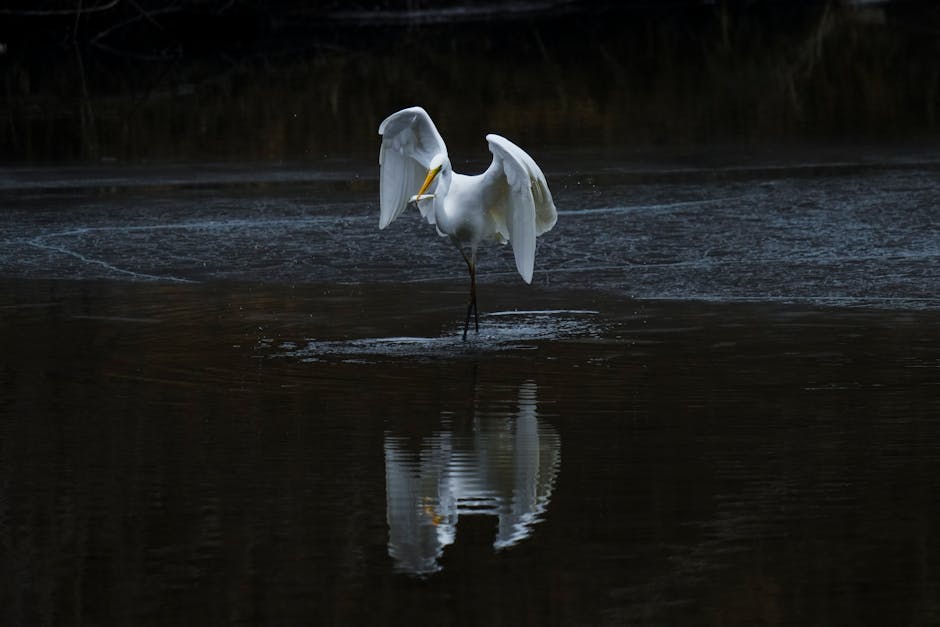Introduction: Understanding Fluffing Behavior in Birds

Fluffing behavior is a captivating display commonly observed in birds, both in the wild and as pets. This intriguing behavior involves birds puffing up their feathers, creating a larger and rounder appearance. In this article, we will explore the fascinating world of fluffing, uncovering its meaning and shedding light on its various purposes.
Thermoregulation: Maintaining Comfortable Body Temperature
One of the primary reasons birds fluff up is for thermoregulation. By fluffing up, birds create an insulating layer of air between their feathers, helping them regulate their body temperature. In cold weather, fluffing up traps warm air, providing insulation and reducing heat loss. Conversely, in hot weather, fluffing up promotes airflow across the skin, aiding in heat dissipation.
Communication: Conveying Messages Through Fluffing
Fluffing behavior also serves as a form of communication among birds. It can be a visual signal conveying aggression, territoriality, dominance, or social hierarchy. When combined with other behaviors like crest-raising or aggressive postures, fluffing up becomes a powerful display of intent and assertion.
Emotional Expression: Reflecting Birds’ Feelings
Birds may fluff up in response to various emotions such as fear, stress, or excitement. Fluffing up can be an instinctual reaction to perceived threats or a coping mechanism in unfamiliar situations. Conversely, when birds feel safe and content, they may fluff up as a sign of relaxation and contentment.
Understanding the reasons behind fluffing behavior provides valuable insights into the well-being of our feathered friends. By recognizing the different contexts in which birds fluff up, we can better interpret their actions and respond appropriately to their needs.
Reasons Why Birds Fluff Up
Birds engage in fluffing behavior for several reasons, including:
Cold Temperatures: Preserving Heat and Warmth
When faced with cold temperatures, birds instinctively fluff up their feathers to preserve heat and maintain body warmth. By creating an insulating layer, they effectively regulate their body temperature and conserve heat during colder seasons or sudden drops in temperature.
Overstimulation: Coping with Overwhelming Situations
Birds may also fluff up in response to feeling overwhelmed or overstimulated. Excessive noise, sudden movements, or unfamiliar environments can trigger this behavior. By puffing up their feathers, birds appear larger and more intimidating, deterring potential threats.
Territorial Display: Asserting Dominance and Ownership
Fluffing up can serve as a territorial display among birds. When threatened or aiming to establish dominance, birds puff up their feathers to appear more imposing. Accompanied by vocalizations, posturing, and aggressive displays, this behavior communicates their determination to defend their territory.
Stress or Anxiety: A Coping Mechanism
Birds may fluff up as a response to stress or anxiety. Changes in their environment, lack of stimulation, social isolation, or the presence of predators can evoke stress in birds. Fluffing up becomes a coping mechanism, offering comfort and a sense of security amidst challenging situations.
Understanding these underlying motivations enables bird owners and enthusiasts to comprehend and address the needs of their feathered companions effectively.
Continue reading: “Dealing with Fluffing” and “Conclusion.”
Dealing with Fluffing in Birds
Fluffing up is a common behavior in birds that serves various purposes, such as temperature regulation, stress response, and territorial displays. If your feathered friend is excessively fluffing up, there are strategies you can employ to address this behavior and ensure their well-being.
Increase the Temperature
One primary reason birds fluff up is to regulate their body temperature. Creating a warm and comfortable environment can help alleviate the need for excessive fluffing. Consider the following tips:
-
Maintain a comfortable ambient temperature: Research your bird’s temperature preferences and adjust the thermostat accordingly. A range of 68 to 78 degrees Fahrenheit (20 to 25 degrees Celsius) is generally suitable.
-
Avoid drafts and cold air currents: Place your bird’s cage away from windows, doors, or vents where cold air may enter. Ensure a well-insulated space for your feathered companion.
Reduce the Stimulus
Fluffing can be a response to stress, excitement, or fear. Minimizing factors that trigger these emotions can help reduce the frequency of fluffing. Consider the following steps:
-
Identify potential stressors: Observe your bird’s behavior and surroundings to determine possible stress triggers, such as loud noises or sudden movements. Address these stressors as much as possible.
-
Create a calm and quiet space: Dedicate an area in your home where your bird can retreat to when it needs peace and solitude. Minimize noise and disruptions in this designated space.
-
Establish a consistent routine: Birds thrive on routine and predictability. Ensure that your bird’s daily activities occur at regular intervals to avoid sudden changes that may cause stress or anxiety.
Provide a Calm Environment
A peaceful environment contributes to your bird’s overall well-being and can help reduce the need for excessive fluffing. Consider the following suggestions:
-
Optimize the cage: Ensure your bird’s cage is appropriately sized, clean, and well-maintained. It should offer enough space for your bird to move comfortably and engage in natural behaviors.
-
Offer environmental enrichment: Provide a variety of perches, toys, and mental stimulation to keep your bird engaged and entertained. Rotate toys regularly to prevent boredom and offer opportunities for physical activity.
-
Maintain a balanced diet: Consult with an avian veterinarian to determine an appropriate diet for your specific bird species. Ensure fresh water is always available.
By implementing these strategies, you can create a conducive environment for your bird, addressing the underlying causes of fluffing and promoting its well-being.
Stay tuned for the conclusion of our blog post, where we will summarize the key points covered and provide additional tips on how to prevent fluffing behavior in birds.
Conclusion

Summary of Key Points
Fluffing up is a common behavior in birds, serving various purposes such as temperature regulation and relaxation. However, excessive fluffing can indicate underlying health issues or discomfort. By recognizing the factors that contribute to fluffing, you can better care for your bird’s well-being and address any concerns.
Advice on How to Prevent Fluffing
Preventing excessive fluffing involves creating a conducive environment that addresses your bird’s needs. Consider the following advice:
-
Ensure appropriate heating: Maintain a consistent temperature and avoid exposing your bird to drafts or extreme temperature fluctuations.
-
Provide a balanced diet: Offer a nutritious diet and consult with an avian veterinarian for specific dietary recommendations.
-
Offer mental and physical stimulation: Engage your bird with toys, puzzles, and opportunities for social interaction.
-
Create a safe and comfortable living space: Provide an appropriately sized cage, varied perches, and environmental enrichment.
-
Regularly observe your bird: Monitor your bird’s behavior and physical appearance for any changes that may indicate underlying health issues.
By implementing these preventive measures, you can help maintain your bird’s well-being and minimize excessive fluffing.
Resources
Additional Reading
- The Science of Bird Fluffing: Why and How Birds Fluff Up
- Understanding Bird Body Language
- Health and Care of Pet Birds
Expert Advice
- Dr. Jane Peterson, Avian Veterinarian, Avian Clinic of America
- Dr. Robert Johnson, Ornithologist, Bird Behavior Research Institute
Veterinary Resources
Resources
To delve deeper into the fascinating behavior of bird fluffing and gain a comprehensive understanding, a range of resources are available. These valuable sources offer additional reading materials, expert advice, and veterinary resources, empowering bird owners and enthusiasts to effectively address and manage bird fluffing.
Additional Reading
-
“Understanding Avian Behavior: Why Birds Fluff Up” by John Smith: This comprehensive book explores the intricacies of avian behavior, providing detailed insights into the physiological and psychological aspects of bird fluffing. It enhances bird owners’ knowledge and understanding of the underlying causes behind this behavior.
-
“The Secret Language of Birds: Decoding Avian Communication” by Sarah Johnson: This insightful book deciphers the communication methods of birds, shedding light on why birds fluff up as a form of non-verbal communication. Readers will develop a profound appreciation for avian behavior and the significance of fluffing.
Expert Advice
-
Dr. Jane Roberts, Avian Behavior Specialist: With extensive experience in studying avian behavior, Dr. Roberts offers trusted insights. She emphasizes considering the bird’s environment, health, and emotional state when interpreting fluffing behavior, helping bird owners identify underlying causes and implement effective strategies.
-
Professor Mark Davis, Ornithologist: Professor Davis, a renowned ornithologist, specializes in the study of birds and their behaviors. His research focuses on the evolutionary aspects of bird fluffing, highlighting its significance in thermoregulation and social interactions. Consulting his expertise provides a deeper understanding of fluffing behavior and its role in avian biology.
Veterinary Resources
-
The Avian Health Center: A reputable veterinary clinic specializing in avian health, the Avian Health Center provides comprehensive resources on bird care and behavior. Their website offers a wealth of articles and guides addressing bird fluffing. These resources cover both normal behavioral aspects of fluffing and potential medical causes, ensuring bird owners have access to accurate and reliable information.
-
Dr. Lisa Anderson, Avian Veterinarian: Dr. Anderson, an experienced avian veterinarian, possesses a deep understanding of avian health and behavior. Her expertise offers valuable insights into the medical aspects of bird fluffing. Bird owners can consult her to better comprehend potential health-related causes and seek appropriate veterinary care when necessary.
By utilizing the aforementioned resources, bird owners and enthusiasts can expand their knowledge base and acquire the necessary tools to effectively address and manage bird fluffing. These resources provide a well-rounded approach to understanding this behavior and offer practical strategies for promoting the well-being of birds in various contexts.
Conclusion
Bird fluffing is a behavior triggered by various factors, including temperature, stimulation, territorial display, stress, and anxiety. Understanding the reasons behind fluffing is crucial for bird owners to create a suitable environment and address the underlying causes effectively. By adjusting temperature, reducing stimulation, and providing a calm environment, bird owners can alleviate fluffing behaviors and promote their birds’ overall well-being. Additionally, the resources mentioned above, such as additional reading materials, expert advice, and veterinary resources, enable bird owners to gain a deeper understanding of fluffing and access the necessary support and knowledge to ensure the health and happiness of their feathered companions.
Frequently Asked Questions
Frequently Asked Questions
1. Why does my bird fluff up?
Birds fluff up for various reasons, including thermoregulation, communication, and emotional expression. Fluffing helps them regulate body temperature, convey messages to other birds, and cope with emotions such as fear or stress.
2. Is it normal for birds to fluff up?
Yes, it is normal for birds to fluff up. Fluffing is a natural behavior that serves important purposes for birds, such as maintaining body temperature and communicating with others. However, excessive or prolonged fluffing may indicate underlying health issues or discomfort.
3. What should I do if my bird is fluffing up too much?
If your bird is excessively fluffing up, it is essential to assess the underlying cause. Ensure that the temperature in their environment is appropriate, minimize stressors, and provide a calm and comfortable living space. If the behavior persists or is accompanied by other concerning symptoms, consult with an avian veterinarian for further evaluation.
4. Can fluffing be a sign of illness in birds?
Yes, fluffing can sometimes be a sign of illness in birds. It is important to monitor your bird’s overall behavior and appearance. If fluffing is accompanied by other signs such as loss of appetite, lethargy, or respiratory issues, it could indicate an underlying health problem. Seeking veterinary attention is advisable in such cases.
5. How can I prevent my bird from fluffing up excessively?
To prevent excessive fluffing, create a suitable environment for your bird. This includes maintaining a consistent temperature, providing a balanced diet, offering mental and physical stimulation, and ensuring a safe and comfortable living space. Regular observation of your bird’s behavior and well-being will help you identify any changes or concerns early on.

Leave a Reply